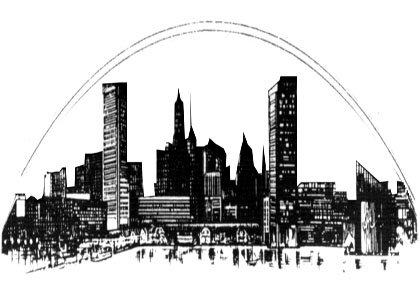Poly High School? POLY HIGH SCHOOL? Who would utter such nonsense? Well, WJZ-TV reporter Kai Reed for one.
Reed was recently reporting a story about the tragic presumed drowning death of Air National Guardsman Evan Curbeam. The airman, Reed told WJZ viewers, was a graduate of “Poly High School.”
Only someone who is not from around here would commit such an egregious gaffe. That’s what bugs me about most of the on-air personalities at local TV stations: they are not from around here, and it shows in their reporting.
WJZ in particular has one on-air personality who insists on pronouncing Wabash Avenue as “wah-BOSH”
Avenue. I cringe every time I hear that.
And folks from around here— either born here or having lived here for years— know that the school called Poly is a high school. And we know what the official name of the school is too.
So, for the benefit of Ms. Reed— and her colleagues at WJZ, who I’m sure don’t know any more than she does— the official name of the school is Baltimore Polytechnic Institute.
That’s precisely how journalists— in broadcast and print news outlets— should refer to the school. That is, if they want to be accurate. And being accurate is what journalism is all about.
The school opened its doors in 1883. For years, it was a boys-only institution. Girls were admitted in the 1970s. Every year in November, Poly renews the second-oldest high school football rivalry in the nation when it plays against City.
The official name of Poly’s archrival is Baltimore City College. Folks from around here refer to it as City. No, we do NOT call it “City High School.” We’re from around here, you see; we all KNOW it’s a high school. Like Poly, City was also an all-boys school for decades. It went coed in the late 1970s.
As the saying goes, you can look all this stuff up. It’s right on the Internet. I’m sure there are computers at WJZ. I urge reporters to start using them. It wouldn’t hurt editors and general managers to use them either.
When television reporters go on the air and say silly things like “Poly High School,” I don’t really blame them. For me, the buck stops at the top, and that’s where the editors and general manager are.
A Kai Reed might not know Poly’s official name is Baltimore Polytechnic
Institute, but the editors and general managers at WJZ should, and they should make it clear to their reporters to use the proper name of the school in their reporting.
Of course, the editors and general managers probably aren’t from around here either. They’re probably just using Baltimore as a pit stop on their way to a job at a bigger station in New York, or at a network.
So they really don’t give a fig when their reporters call Baltimore Polytechnic Institute “Poly High School,” or Baltimore City College “City High School.”
Those editors and general managers don’t give the proverbial tinker’s dam about how their on-air personalities consistently refer to places clearly in West Baltimore as being in southwest Baltimore.
So, for the benefit of general managers, news editors and reporters at WJZ, WMAR, WBAL and WBFF, I offer the following Baltimore primer.
Charles Street divides the eastern half of Baltimore from the western half.
Am I going too fast for you guys?
Because, I can slow down a little— Baltimore Street divides the northern half of Baltimore from the southern half.
Now read this really carefully. I would like to think it’s not that complicated, but judging from what your on-air personalities have said in the past, it might be a tad hard for you all to grasp.
IT’S A GEOGRAPHIC IMPOSSIBI-LITY TO BE WEST OF CHARLES STREET AND NORTH OF BALTIMORE STREET AND BE IN SOUTHWEST BALTIMORE!
When there’s a news story about an incident happening on a particular street, there’s a simple way to determine if that location is in West Baltimore, East Baltimore, southwest, southeast, etc.
TV reporters and editors need to do what we print journalists do. We use something called the “Crisscross Index.” It tells us which streets are north, south, east or west. And it has things called MAPS in it too, which should make it easier.
So to the general managers and news editors at local television stations I say this: please, even if your reporters can’t act like they’re from around here, at least pretend that you are.
